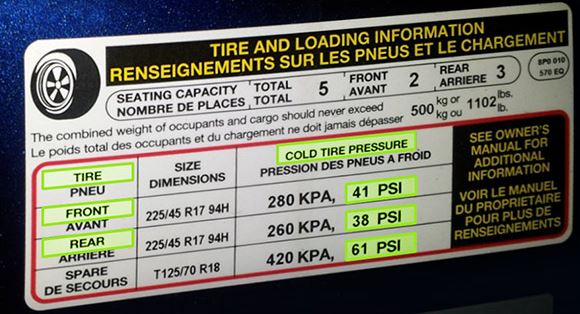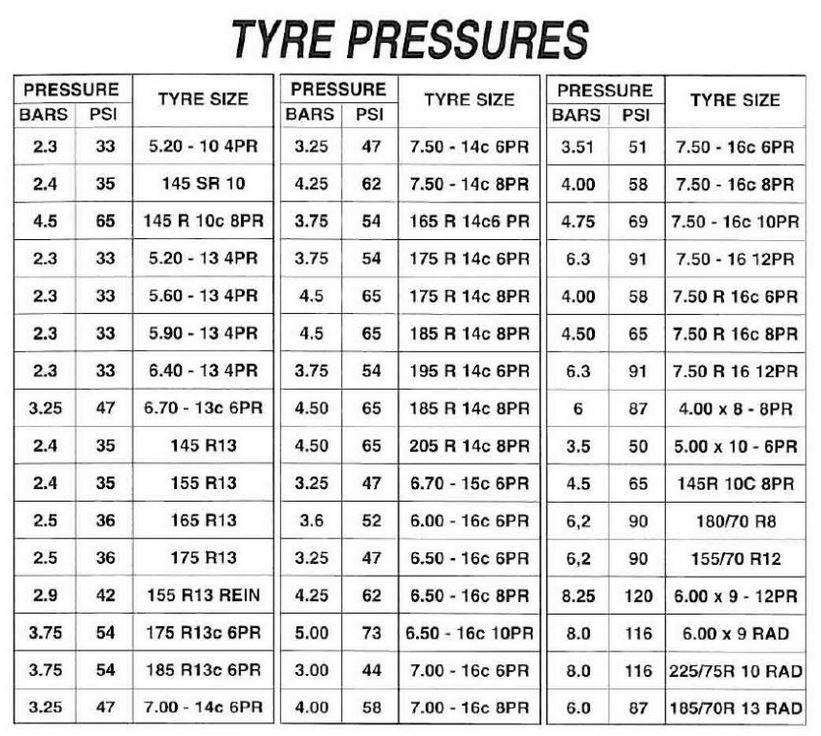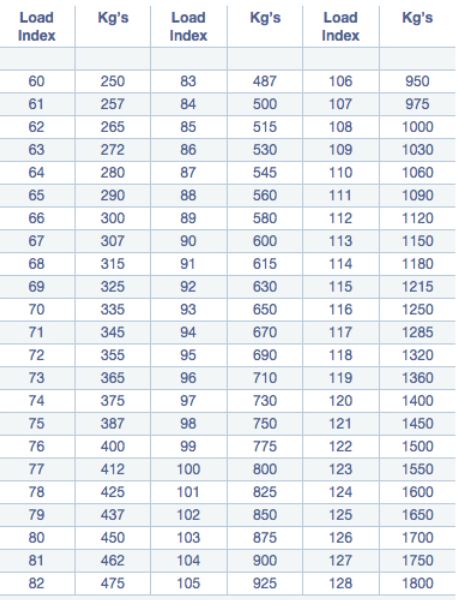Last updated on November 25th, 2021 at 05:40 pm
Every car runs on two fundamental things; fuel and tires. It is currently impossible to move a car without tires, maybe in the near future we may see cars running against the basic laws of motion and gravity but for now, all cars have good old tires.
In the past they used to be wheels. Before the invention of cars, there were horse-drawn carts that moved on wheels.
The wheels however were not able to move as swiftly over certain terrain. Several innovative years later after Ford’s Model T was invented, roads were constructed and there was a general acceptance that the creation of modern car wheels with strengthened rubber was a wise decision.
Rubber tires are more flexible making the steering capacity of modern cars better. As a result of their components, they are more durable for driving and can withstand prolonged and fast driving. Technology and engineering are quite beautiful fields.
There is a global recommended tire pressure just as there are the global standards of speed for different types of roads. You also love to read this article too What Is Best Tire Pressure For Highway Driving
Cars are after all still the most rampant means of transportation to date. In African countries, today cars are seen as a symbol of status and wellbeing.
A person who doesn’t own a car in a country like Nigeria is seen as poor irrespective of what choices may have influenced the individual’s decision not to own a car.

Should I inflate my tires to the max psi
The maximum tire pressure for most car tires is 51 psi. So, should I inflate my tires to the max psi? The answer depends on the type of road and the weather condition. Some people use a tire pressure of 46 for a car with 51 psi max in summer and then 50 psi in winter for a car with 51 psi max.
If you want to know your required or recommended tire pressure, the best place to check is your car’s user manual. It is important to note that it is not advisable to fill your tire to max pressure when it is not necessary.
There are 2 places that offer accurate tire pressure guide you should check for the recommended tire pressure of your particular vehicle and they are:
- The car user manual
- The driver’s door jamb
If you have tried the first two places without success, you can do a quick Google search with the car’s year, make and model.
Type tire pressure after it and you should get the recommended tire pressure for your car’s model. Remember to note it down somewhere so that you don’t forget.

What Happens When Your Tires are Overinflate or Underinflate?
If your tires are too much or below the recommended tire pressure, here is what will happen you keep driving with it:
Diving with over inflated tire pressure:
- Issues with processing and handling security: This will make entire braking system to fail. You will notice that your tires do not last as long as supposed and your car braking will be compromised. You also are running the risk of a reduced traction.
- Fast and uneven tire wear. You will notice that your tires will wear faster than normal and only in the middle, because the tires cross the middle, increasing the contact of this area with the road. Flat-striped ponies can dissipate heat, causing the tires to explode.
- Blow-Outs. Over inflated tire pressure will cause bald strips that can’t dissipate heat, and that can lead to your tires suddenly exploding or blowing out.
Driving with under inflated tires puts you at risk of:
- Tire damage and safety in tires. Tires with under-inflated psi can greatly increase the braking distance and can have a significant effect on the steering and will distort the handle control. When the tire pressure is very low, the pavement hits the road more and creates friction. The friction can cause overheating and in special cases it can lead to separation and explosion of the pavement.
- Premature wear reduces the durability of the tires by 15 percent if not higher. If the tire pressure is too low, the tires must wear on both outer axles because the edges come into excessive contact with the road.
- Bad gas mileage while driving. Cars with low inflated tires consume more fuel because the save fuel savings because they work harder for engines: inflated tires because more tire surface to come into contact with the road and create more rolling resistance and friction with the road. This leads to fewer kilometers and higher fuel costs – up to 1.3 cents per liter! Depending on how often you fill it up, it can run into hundreds of dollars a year.
At what PSI will a tire explode?
This is an interesting question that I always get asked which is “at what PSI will the tire explode?” This depends to a large extent on what the max psi of your specific vehicle model is. If the maximum psi of your vehicle for example is 51 and you inflate it until 52, the likelihood that the tire will burst increases. Note that some car tires at the max psi will still burst if driven in certain conditions. To avoid unplanned tire costs, it is advisable to drive within the range of 36 – 45 psi when you have a max psi of 51.
What is the lowest psi you can drive on?
Again, just like in the question pertaining to what the highest psi one can drive with is; it depends on the max psi. If the Max psi is 40 for example, the lowest you can drive can be around 30 psi. This is to avoid future questions like; is 51 psi too much for tires, is 50 psi too much for tires? Is 40 psi too much for tires? The reason s to avoid the tire sagging. If the tire does not have enough pressure to run on, the weight of the car will come down on the wheels which will start to damage the tire until friction sets it ablaze. It usually happens so fast you may not notice until it is too late.
What is the recommended tire pressure?
The recommended tire pressure varies from car to car. Toyota for example has several models. There is the Toyota Camry, Toyota Corolla and so on. Each of these models typically comes with a unique set of manuals and therefore different driving requirements. But the rule of thumb is that for 51 psi max cars, 36 – 37 psi is a good psi to have. As I mentioned earlier, it is not advisable to fill up the tire t the recommended pressure because it will cause the tire to wear unevenly and have to replace the tire faster than you plan.
If the vehicle in question is a heavy-duty truck, the psi will be very different. Again, even what the psi should be is dependent on the max psi which we have established that you can find on Google. With the above explanations, questions like; Is 51 psi too much? Is 36 psi too high? Is 48 psi too much for tires? The answer is it all depends on the max psi of the vehicle in question.

What is the recommended tire pressure for 80 psi max
If you own a truck, you have noticed it has a tire PSI but you are not sure, for example; what is the recommended tire pressure for 80 psi max and I will say base on my experience that the tire pressure for 80 max psi tires would be around 68 – 70 psi. The number is close to the max but outside range enough to avoid wear occasioned by pressure. Don’t forget that the tire can be refilled from time to time even if it is not time to change it yet. If you set a psi and drive with it and over time the pressure reduces, you can top up the pressure on your tire and continue your jolly ride.
Cars can be expensive to maintain, your job as a car owner is to avoid unnecessary wear and tear to maximize use. Servicing the car is mandatory because it ensures that there are no underlying mechanical or electrical faults that can make your car dangerous to drive but simply following your psi pressure and topping up regularly can make a significant difference in how much you pay in car servicing monthly.
Every car has a max psi pressure, try to stay within the recommended limit and if possible, fill it a little bit lower to prolong tire usefulness.
Related Article:
- Ideal Tire Pressure: What Should My Tire Pressure Be?
- 11 Best Portable Air Compressor for Truck Tires

Hi dear, my name is Jeffery Ekweghi, and I am a certified mechanic and autobody parts technician. I created this site to share my expertise and experience with car lovers looking to resolve their car-related issues. I am certified in private cars and heavy-duty commercial vehicles. I have worked as a mechanic since 2015 and have experience in vehicle brands like Subaru, Jeep, Toyota, TATA, BMW, Mazda, Honda, Nissan, Kia, TVs, and Others; however, I primarily specialize in Toyota vehicles.












